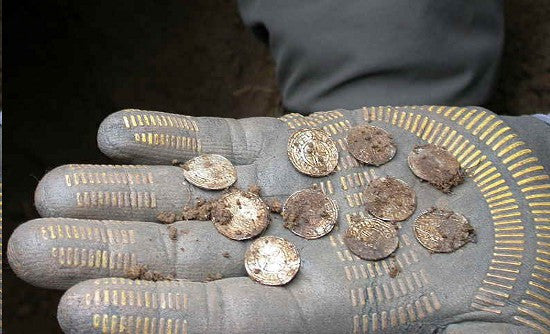A metal detecting group in the UK received an early Christmas treat this year, when one of its members discovered an Anglo-Saxon coin hoard during its festive gathering.
 The finder of the coins almost missed the meet as he couldn't afford the petrol money |
The Weekend Wanderers Detecting Club had met on a farm in Buckinghamshire, when one of its members discovered the cache hidden 2ft under the surface. The 5,251 coins had been buried in a lead box, and date to around AD 978 to 1035.
At the time, Ethelred the Unready and King Cnut reigned, and a royal mint is known to have been producing coins around Buckingham. The incredible condition of the coins suggests they may never have entered circulation.
Coins are some of the most valued of all Anglo-Saxon artefacts, as they provide insight into various aspects of the culture of the day.
The find has now been sent to the British Museum for testing, with hopes that it could be worth up to £1m ($1.6m). However, the Treasure Act of 1996 states that the hoard must be offered to museums first, with the money split between the landowner and the finder.
"The question is, how do we account for the composition of this hoard? Is it a hoard of a Viking - his accumulated wealth - or is it something else? Only half of the coins have been cleaned so far - the eventual date range could prove to be much more expansive," commented Simon Keynes, a professor of Anglo-Saxon at Cambridge University, to the Daily Mail.
"Until then, the hoard could be difficult to explain, but it is certainly an extraordinary find."
Please sign up to our free newsletter for more exciting news about collecting.






